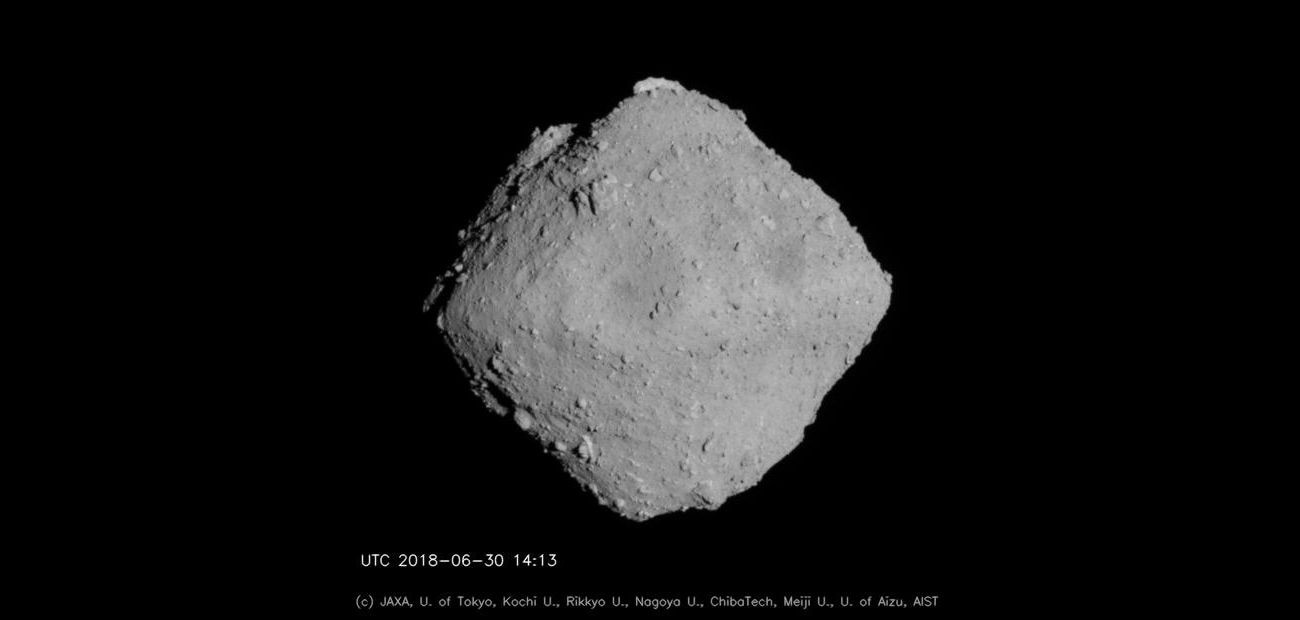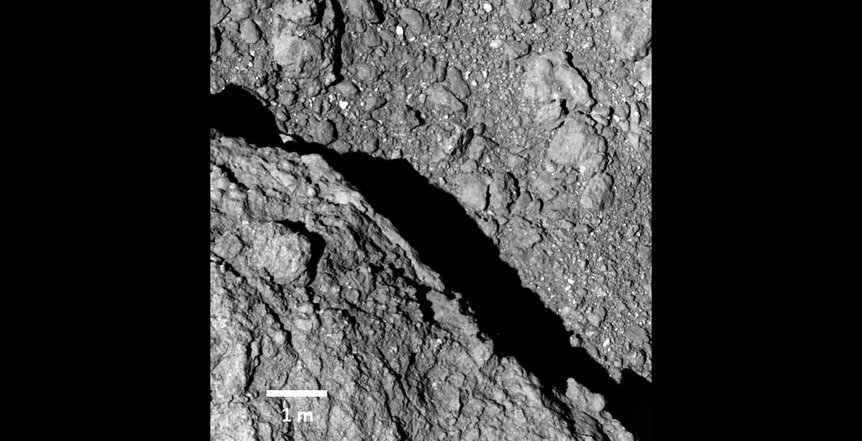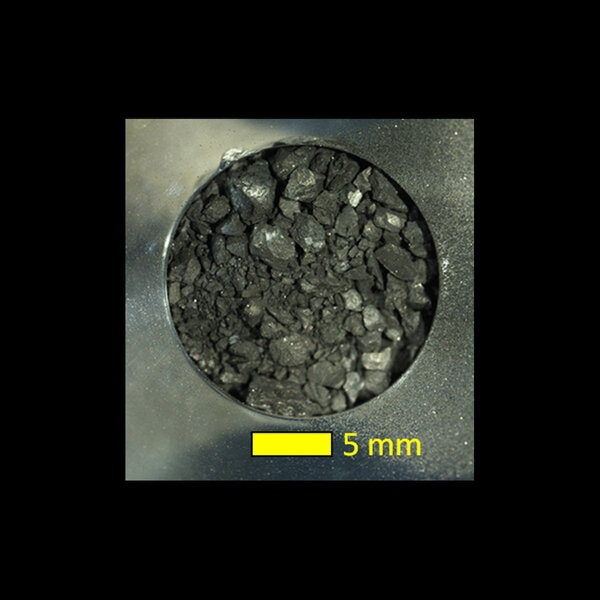Create a free profile to get unlimited access to exclusive videos, sweepstakes, and more!
Ryugu was born an asteroid, became a comet, and died an asteroid
Asteroid dates to just after the formation of the solar system itself.

In December 2020, after a year’s journey through space, a small capsule from the Japanese Space Agency’s Hayabusa2 mission fell to Earth. Landing in the Australian Outback, it contained just 5.4 grams of the most precious stuff there is: Pristine samples from the surface and interior of an asteroid.
Some of these samples have now been analyzed, and the results show that the asteroid Ryugu is the most primitive, unaltered object ever studied, much the same as it was when the solar system itself was new.
Ryugu is a near-Earth asteroid, making it perfect for study by a space mission. It’s small, less than 900 meters wide, and what’s called a C-type asteroid: High in carbon content and extremely dark, only reflecting a few percent of the light that hits it. That actually makes them hard to study from the ground, because they tend to be faint.
Hayabusa2 visited Ryugu, arriving there in 2018. It mapped the surface, including the mineralogy, and dropped four rovers to examine it up close. Most importantly, though, it dropped down to the surface twice to collect samples. The first collection grabbed materials from the surface. The second used what was essentially a free-flying cannon to shoot a 2-kilogram copper slug into Ryugu, which dug a hole into the asteroid 10 meters across. Later, the spacecraft itself dipped down once again to collect samples, which presumably came from deeper inside Ryugu.
These were then sealed into different containers and sent to Earth in a sample return capsule. That is what landed in 2020, and a paper just published by scientists shows their analysis of 95 milligrams of the asteroidal material [link to paper].
The material is most similar to a type of meteorites called C1 chondrites. These are dark, rich in carbon, and tend to show very little processing, meaning they are pretty much unchanged since they formed billions of years ago. Scientists call them primitive.
However, Ryugu is different from these meteorites in key ways. C1s usually have chondrules, which are tiny round bits that grew when the solar system was young. Ryugu lacks even those, indicating it’s even more primitive. It’s the most unprocessed material ever studied in the lab.
It’s also loaded with phyllosilicates, which are minerals that form in water. Liquid water! And measuring things like magnetite, the scientists were able to show that the peak of liquid water content was probably only about 5 million years after the solar system formed. Material from the subsurface, from the second collection site, indicates the water was at about 37° C — human body temperature —and never got above 100° (though material on the surface did get warmer).
Small asteroids like Ryugu were certainly once parts of larger asteroids that were blasted apart by impacts. Ryugu’s composition indicates it formed far from the Sun, but did get warm, which means there must have been another heat source. That was very likely short-lived radioactive elements, which in turn means the parent body must have been dozens of kilometers across, big enough to have enough such elements to melt the water ice it contained.
This means we have part of the life story of Ryugu: It likely started off as a small part of an ice-bearing asteroid which suffered an impact. Ryugu itself had many such impacts over time, or at least one big enough to shatter it and recollect into a rubble pile. It got close enough to the Sun that water-bearing minerals lost their water through sublimation — turning directly from solid to gas — which dried it out and made it very porous and crumbly. In other words, you can think of it as starting off as an asteroid, becoming a comet, then turning back into an asteroid once again. This may be the life cycle of many such small asteroids.
One big finding was expected, but still exciting: They found amino acids in the samples.
Amino acids are relatively simple molecules that are used by biology to make proteins, a critical building block of life. Earth is lousy with them but we don’t know where they formed. Some may have formed on Earth, but we find them in meteorites and comets as well. It’s possible that meteorites were contaminated after falling to Earth, though some are collected so rapidly it’s unlikely, but either way the Ryugu samples are 100% pristine, uncontaminated, and this result shows for sure amino acids exist on asteroids. That means it’s possible they brought the first ones to Earth, which then became incorporated into organic biology.
It could very well be that, for a bit of a broad interpretation, life here began out there.
Mind you, this is just the first of many such studies that will be done with these samples. Also, the NASA mission OSIRIS-REx got samples from the asteroid Bennu, and those will be dropped to Earth in September 2023. Several hundred grams of material were grabbed, so this will be a bonanza for planetary science, and for investigating what the solar system was like right after it formed.




























